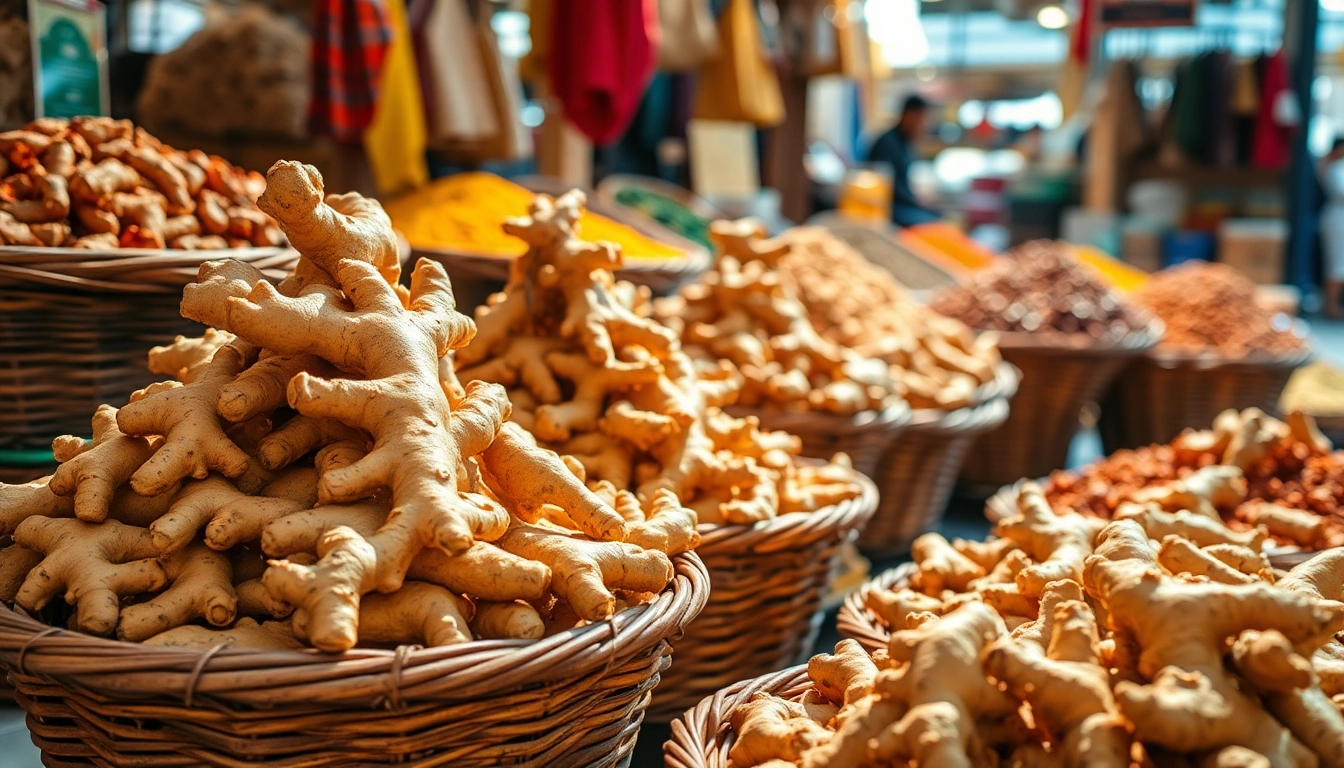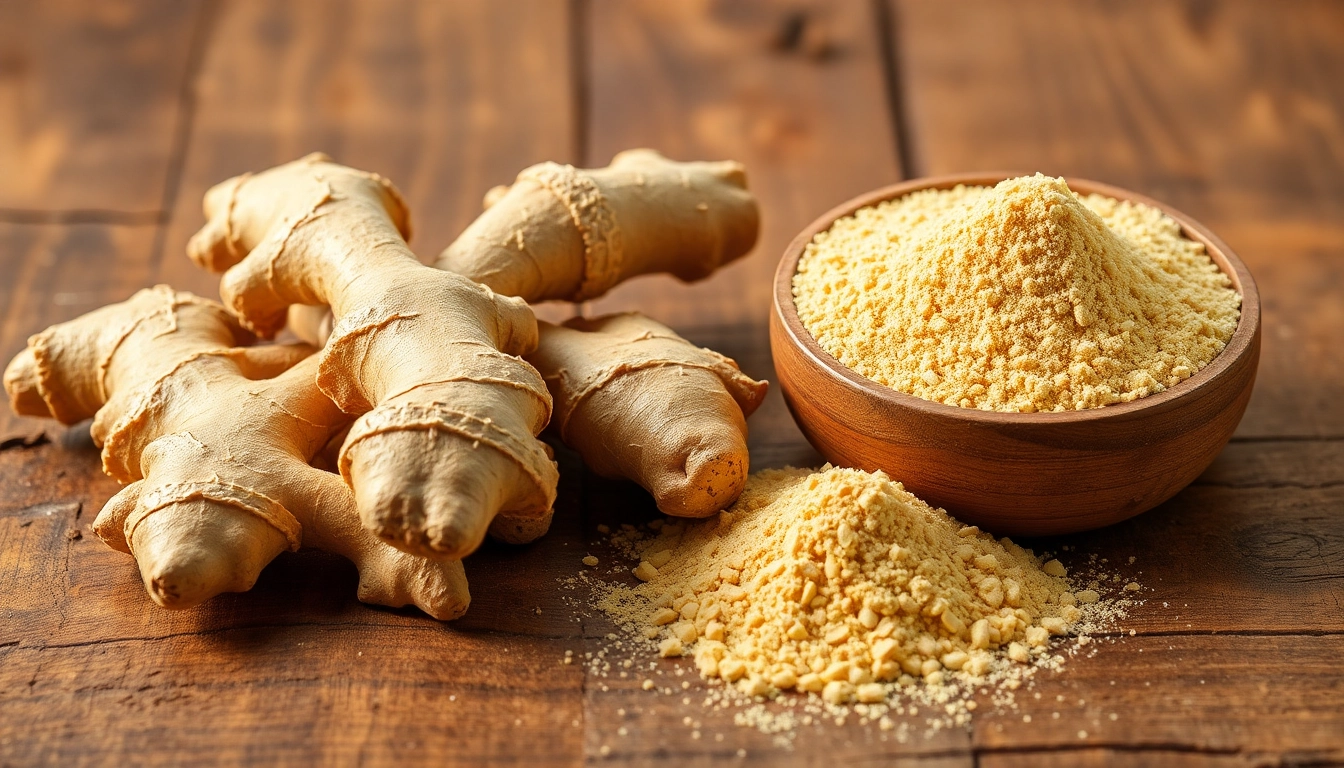Understanding the Significance of Dry Ginger in the Spice Industry
Dry ginger, also known as sun-dried or dehydrated ginger, holds a pivotal role in the global spice market due to its unique flavor profile, medicinal properties, and culinary versatility. Historically, dry ginger has been treasured in various cultures for centuries, especially in traditional Indian, Chinese, and Southeast Asian cuisines. Its significance transcends culinary uses, as it is renowned for its health benefits and medicinal applications, making it a highly sought-after raw material for health supplements and herbal formulations.
At Dry Ginger, we prioritize authenticity and quality, sourcing only premium raw ginger and processing it with advanced techniques to preserve its potent properties. As consumer preferences shift towards natural and organic ingredients, the demand for high-quality dry ginger continues to rise, fueling its importance in both domestic and international markets.
Historical and Cultural Importance of Dry Ginger
Dry ginger’s roots date back thousands of years, with evidence of its use in ancient Indian Ayurveda, Traditional Chinese Medicine, and Middle Eastern herbal remedies. In Ayurveda, dry ginger (known as “Shunthi”) is considered a vital component for boosting digestion, enhancing immunity, and alleviating various ailments such as respiratory issues and inflammation.
In Indian culture, dry ginger is often used in ceremonial and culinary traditions, featuring prominently in spice blends, pickles, and herbal teas. Its cultural significance is complemented by its role in traditional medicine systems, where it’s valued for its warming properties and ability to stimulate circulation.
Beyond its cultural roots, dry ginger has become a global commodity, exported widely to meet the demands of health-conscious consumers. Its integration into modern dietary supplements and functional foods reflects its enduring importance across civilizations.
Health Benefits and Culinary Applications
Dry ginger offers a plethora of health benefits backed by scientific research. It is rich in gingerol compounds, which possess powerful antioxidant, anti-inflammatory, and antimicrobial properties. These compounds help in pain relief, reducing nausea, improving digestion, and strengthening the immune system. Moreover, dry ginger is used extensively to combat colds, flu, and indigestion, making it a household staple in many regions.
From a culinary perspective, dry ginger imparts a warm, spicy aroma and pungent flavor that enhances a wide range of dishes. It is commonly used in spice blends such as garam masala, chai spice mixes, and traditional pickles. Additionally, dry ginger is a key ingredient in confectioneries, baked goods, and beverages like ginger tea and health tonics. Its long shelf life and ease of storage make it an ideal ingredient for manufacturers and home cooks alike.
For manufacturers and food innovators, dry ginger opens doors to product diversification, including ginger powders, extracts, oils, and health supplements—each catering to specific market segments.
Global Market Trends for Dry Ginger Products
The global market for dry ginger is experiencing consistent growth driven by rising awareness of health benefits, organic product popularity, and the increasing demand for natural flavoring agents. Asia-Pacific remains the largest consumer and producer due to traditional medicinal uses and widespread culinary applications. Simultaneously, North America and Europe are witnessing expanding markets for organic, non-GMO, and sustainably sourced dry ginger products.
Recent market analyses indicate that the organic dry ginger segment is growing at a compound annual growth rate (CAGR) of approximately 7-9%, reflecting consumer preference for chemical-free and ethically sourced products. Health supplement formulations incorporating dried ginger, such as capsules and powders, represent a significant share of export growth. Additionally, innovative product developments like ginger-infused beverages, health drinks, and functional foods are broadening the scope of the dry ginger market.
Leading exporters like Spice Nest are leveraging global trade expos and certifications to capitalize on these trends, ensuring their products meet international quality standards and cater to evolving consumer preferences.
Quality Standards and Certification for Dry Ginger Manufacturing
Selecting Authentic Raw Materials for Premium Dry Ginger
Ensuring the highest quality starts at the sourcing stage. The best dry ginger is derived from fresh, mature ginger roots harvested from certified organic farms. Selecting raw materials free from pesticides, contaminants, and adulterants is crucial. At Spice Nest, we collaborate with trusted farmers and implement rigorous quality checks to guarantee raw ginger’s authenticity and purity, laying the foundation for premium dried ginger products.
Certification Processes and Quality Assurance Protocols
Certifications such as ISO, HACCP, organic certifications, and international food safety standards are vital for establishing credibility in the global market. Our manufacturing facilities undergo comprehensive audits, adhering to Good Manufacturing Practices (GMP) and ensuring sanitary processing environments. Regular testing for pesticide residues, microbiological quality, and moisture content ensures our dry ginger meets international standards, effectively boosting consumer confidence.
Packaging and Storage Best Practices to Retain Freshness
Proper packaging techniques—such as vacuum sealing, moisture-proof and air-tight packing—are essential to preserve flavor, aroma, and potency. Store dry ginger in cool, dry, and hygienic conditions away from direct sunlight to prevent aging and quality degradation. Cost-effective yet high-quality packaging not only safeguards the product but also enhances shelf appeal, facilitating export success.
Manufacturing and Exporting Dry Ginger Effectively
Modern Extraction and Processing Techniques
Advanced processing technologies like flash drying, hot air drying, and low-temperature dehydration enable us to produce dry ginger that retains maximum flavor and active compounds. Our proprietary techniques are designed to prevent over-drying, which can lead to flavor loss, ensuring that our dry ginger maintains its distinctive pungency and health properties.
Compliance with International Trade Regulations
Exporters must navigate complex regulations related to food safety, phytosanitary norms, and import-export tariffs. We meticulously comply with the standards set by countries such as the US (FDA), EU (EFSA), and other importing nations. Our documentation includes phytosanitary certificates, certificates of organic authenticity, and compliance reports, streamlining customs clearance and market entry.
Building Reliable Logistics and Distribution Networks
Efficient logistics are critical for maintaining product quality during transit. We partner with reputable freight forwarders offering temperature-controlled warehousing and timely delivery services. A robust distribution network ensures that premium dry ginger reaches international markets, maintaining freshness and preventing spoilage, thus building long-term customer trust.
Marketing Strategies for Dry Ginger in Domestic and International Markets
Creating Compelling Product Narratives and Branding
Effective branding emphasizes the purity, organic certification, health benefits, and authentic sourcing of dry ginger. Storytelling around traditional relevance and modern health applications cultivates consumer trust. Our branding under Spice Nest reflects our commitment to quality and sustainability, appealing to health-conscious and environmentally aware customers.
Leveraging Online Platforms and Trade Shows
Participating in international food expos, trade fairs like Biofach, and digital marketing through B2B portals expands visibility. Detailed product descriptions, certificates, and transparent sourcing stories aid in attracting buyers globally. Digital campaigns and social media presence help educate consumers on dry ginger’s health benefits, creating brand loyalty.
Developing Customer-Centric Pricing and Packaging Options
Offering flexible packaging sizes tailored to different market segments—small retail packs and bulk export cartons—enhances accessibility. Competitive pricing strategies that consider production costs, tariffs, and logistics foster sustainable growth. Promotions, sample distributions, and value-added offerings like organic labels position Spice Nest as a preferred supplier.
Future Outlook and Opportunities in the Dry Ginger Sector
Emerging Markets and New Applications
The rising global focus on wellness and natural remedies opens vast opportunities beyond traditional uses. Edible health supplements, functional foods, and herbal teas incorporating dry ginger are expanding markets. Emerging economies in Africa, Asia, and South America present new avenues for exports and local manufacturing.
Innovation in Product Forms and Health Supplements
Innovative product development, such as ginger extracts, capsules, and powdered formulations, caters to a wide consumer base. Collaborations with biotech firms for standardized herbal extracts and clinical research to validate health claims further expand market reach.
Investing in Sustainability and Organic Certifications
Sustainability is a buzzword influencing buyer choices. Organic cultivation, eco-friendly processing, and fair-trade practices elevate brand credibility and access premium markets. Long-term investments in sustainable farming practices and organic certifications like USDA Organic and EU Organic are strategic priorities for future growth.

